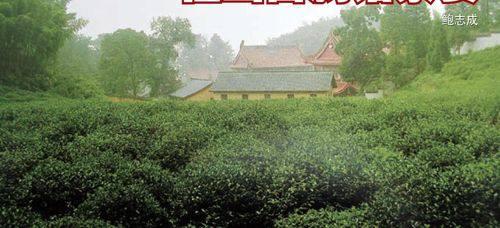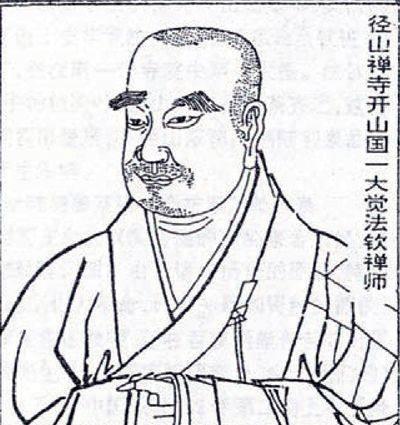径山古茶园
2012-04-29阮忠训黄林生
阮忠训 黄林生



“径山茶宴”是我国古代独特的茶宴习俗的存续,因诞生于南宋都城临安府(今杭州)余杭县径山万寿禅寺而得名,它起源于唐代中期兴起的茶会茶社,在宋元时期的江南禅院盛行一时,流传迄今已有长达1200余年的历史。
径山为浙西天目山的东北余脉,因有路径可通天目山而得名,雄伟峻拔,气势非凡,苏东坡有“势若骏马奔平川”之句。径山群峰罗立,古木参天,翠竹掩映,四季青翠,风景宜人。早在唐天宝元年(743),法钦禅师就在这里结庐开山,种茶供佛,从此径山成为绝胜觉场、名茶产地。在南宋时,径山寺被朝廷敕封为御前皇家功德院,评定为江南禅院“五山十刹”之首,殿宇辉映,楼阁林立,僧众三千,时有“东南第一禅院”之称。历代无数高僧、墨客、茶人、学者、权贵、名流无不心向神往,留下许多名篇华章、轶事佳话,造就了融名山名寺、高僧名士、禅学茶艺、诗文书画于一体的径山文化。
唐朝中期以后,得陆羽《茶经》推波助澜,烹飲之风大行天下,禅僧、士林、宫廷的茶宴、茶会、茶社开始兴起。到宋代,北苑团茶作为皇家贡茶名冠天下,飲茶法从唐时“烹”为主变为“点”为主,“分茶” “斗茶”之风盛行朝野市井。随着禅宗临济宗在江南地区的兴盛和佛教的世俗化,禅院在僧人坐禅修持、僧堂仪规和接待檀越、交结信众过程中,无不依普请之法参用茶事,茶宴、茶会、茶礼融入僧堂生活和禅院清规,成为禅僧必修课和基本功,径山茶宴应运而生。
自唐代径山寺开山祖钦师植茶采以供佛,径山茶宴就初具雏形。据嘉庆《余杭县志》记载,径山“开山祖钦师曾植茶树数株,采以供佛”,这就是径山茶宴的起源。当时禅僧修持主要方法之一是坐禅,要求清心寡欲,离尘绝俗,环境清静。静坐习禅关键在调食、调睡眠、调身、调息、调心,而茶提神醒脑、明目益思等功效,正好满足了禅僧的特殊需要。于是飲茶之风首先在禅僧中流传,进而在茶圣陆羽、高僧皎然等人的大力倡导下在社会上普及开来,“茶道大行,王公朝士无不飲者”。陆羽当年考察江南茶事时,就曾在径山东麓隐居撰著《茶经》,至今留下“陆羽泉”胜迹(在今双溪)。
宋元时期,径山茶宴作为普请法事和僧堂仪规被严格规范下来,并纳入《禅苑清规》,臻于禅门茶礼仪式和茶艺习俗的经典样式,并发展到鼎盛时期。到了宋代,品茗斗茶蔚然成风,制茶工艺、飲茶方法推陈出新,茶会茶宴成为社会
径山古道
The inscription on the wall marks an ancient Jingshan path
径山寺新貌 A view of restored Jingshan Temple
in the south of the Yangtze River Delta during the Song (960-1279) and the Yuan (1279-1368).
Master Faqin came to Jingshan in 743. He built himself a shelter, started a tea farm, and practiced Buddhism. From the very begin-ning, tea was an integral part of the masters Buddhism practice. The temple came into being and the reputation spread. During the Southern Song Dynasty (1127-1279), it was designated as the tem-ple for the royal house and called Jingshan Wanshou (meaning Lon-gevity) Zen Temple. It was officially designated as the number one of the ten Buddhist temples in the south.
Tea was more than a way of life since day one with Master Fa-qin. Zen monks needed to sit and meditate for a long while. A cup of tea helped them calm down and sustain their energy for keeping concentrated on their spiritual inquiry. Tea sipping became popular first among Zen monks. This practice became widespread with the promotion on the part of Lu Yu, who wrote Book of Tea. During one of his field studies across Zhejiang, he stayed near Jingshan Hill.
Tea evolved to play a central part in the Buddhism practices at Jingshan Temple. A set of complex tea rituals was developed and integrated. Monks needed to master the tea-related commandments and daily routines. Tea rituals were also developed to entertain visiting monks, pilgrims and disciples. Over centuries, initial rules concerning tea at Jingshan Temple grew into “Commandments of the Zen Temple”, stipulating procedures and a complete list of dos and donts concerning how tea rites should be observed and con-ducted at the temple. This set of tea rites went to Japan and grew into the Sado or the way of tea, developed and perfected by monks of Rinzai Sect in Japan.
In the past, the tea party was held at Bright Moon Hall for visit-ing VIPs such as court ministers, nobles, venerable monks, and celebrated scholars. Such a ceremonious reception differed in scale and process from those held by and for monks at the temple. At a reception for secular VIPs, monks acted as hosts and VIPs guests. They sat separately according to a seating plan developed and abided by at the temple. On some occasions, however, guests and seculars could be mixed in seating.
Ordinary tea parties were small in scale and did not qualify to be held at the Grand Brightness Hall. Tea could be served at Zen rooms, guest rooms and monks dorms.
Bright Moon Hall is spacious with large windows. The simply furnished hall opens to a view of shady trees, peaks and the sky, creating a sense of serenity and majesty. In front of the hall is a small pond dug by a monk hundreds of years ago. □
